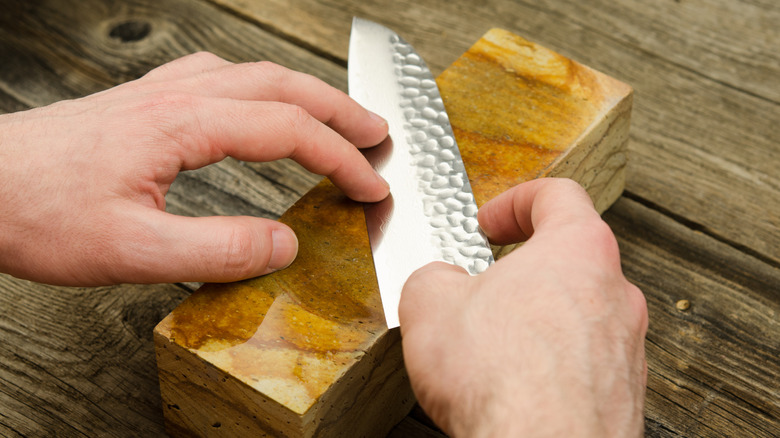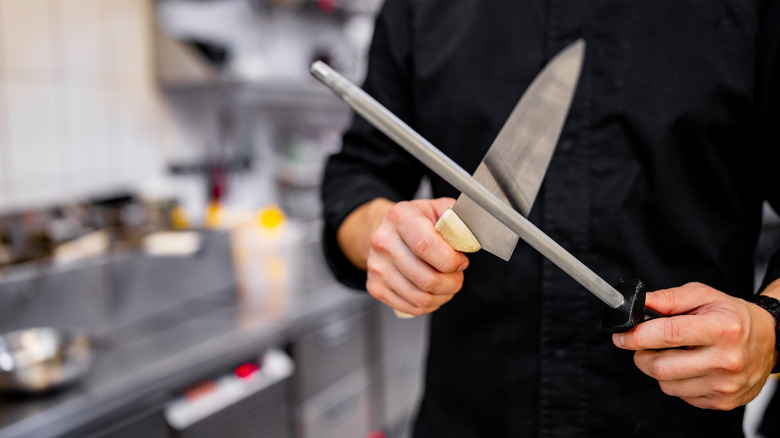Whetstone Alternatives You Can Use To Sharpen Knives
If you love cooking or are just trying to cut that stubborn carrot, you know how important it is to have sharp knives. The proper tool to sharpen a knife is often a whetstone, a piece of rock that's been around for ages. But what if you don't have one? Don't worry — you can keep your knives sharp using pull-through sharpeners or steel rods for either sharpening or honing. While there are lots of reasons to consider buying a sharpening stone, it isn't a necessity for most.
Pull-through sharpeners are the fast food of knife sharpening. They are quick, easy, and do the job with minimal effort. All you need to do is pull your knife through the sharpener a few times, and voila, you've got a sharper blade. These tools usually have two slots: one for coarse sharpening and another for fine sharpening. They use small abrasive wheels or plates inside the slots that reshape the knife edge. While they may not be as precise as a whetstone, they're perfect for people who don't want to spend too much time sharpening.
Next, let's talk about steel. If you've ever watched a cooking show, you've probably seen chefs whipping out a long metal rod and running their knives along it. That's a steel rod, and it can either sharpen or hone your knife, depending on the type of rod. A honing steel doesn't technically sharpen your knife; it just realigns your blade edge and makes it feel sharper without removing any metal. A honing steel is great for maintaining your knives in between sharpenings. On the other hand, sharpening steel does what it says — it sharpens your knife by removing tiny amounts of metal to restore the edge.
Avoid these common mistakes when sharpening your knives
One of the biggest mistakes people make when sharpening knives is pressing down too hard on the blade. It's easy to think that pressing harder will make the knife sharper faster, but that's not the case. Whether using a whetstone or a sharpening steel, pushing with too much force can damage the blade's edge, leaving it uneven or chipped. When sharpening, let the tool do its work. You only need gentle pressure to sharpen or hone the blade effectively.
Another common mistake is not keeping a consistent angle when sharpening. Holding the knife at the wrong angle can result in uneven sharpening or a dull blade. Most knives are sharpened at an angle of 15 to 20 degrees. Too steep or too shallow and you'll either end up with a dull knife or a blade that wears too quickly. If you're using a pull-through sharpener, this is less of a concern since the tool keeps the angle consistent. But if you're using a steel or another manual method, pay attention to that angle for the best results.
Another mistake is over-sharpening. Yes, it is possible to get too excited about having a sharp knife. Every time you sharpen a knife, you remove metal from the blade. If you sharpen it too often, you'll wear down the blade much faster than necessary. Most knives only kneed sharpening a few times a year, depending on how often you use them. The rest of the time, a quick hone with steel will keep them in good shape. Properly cleaning and drying your knives will also help them stay in top shape.

